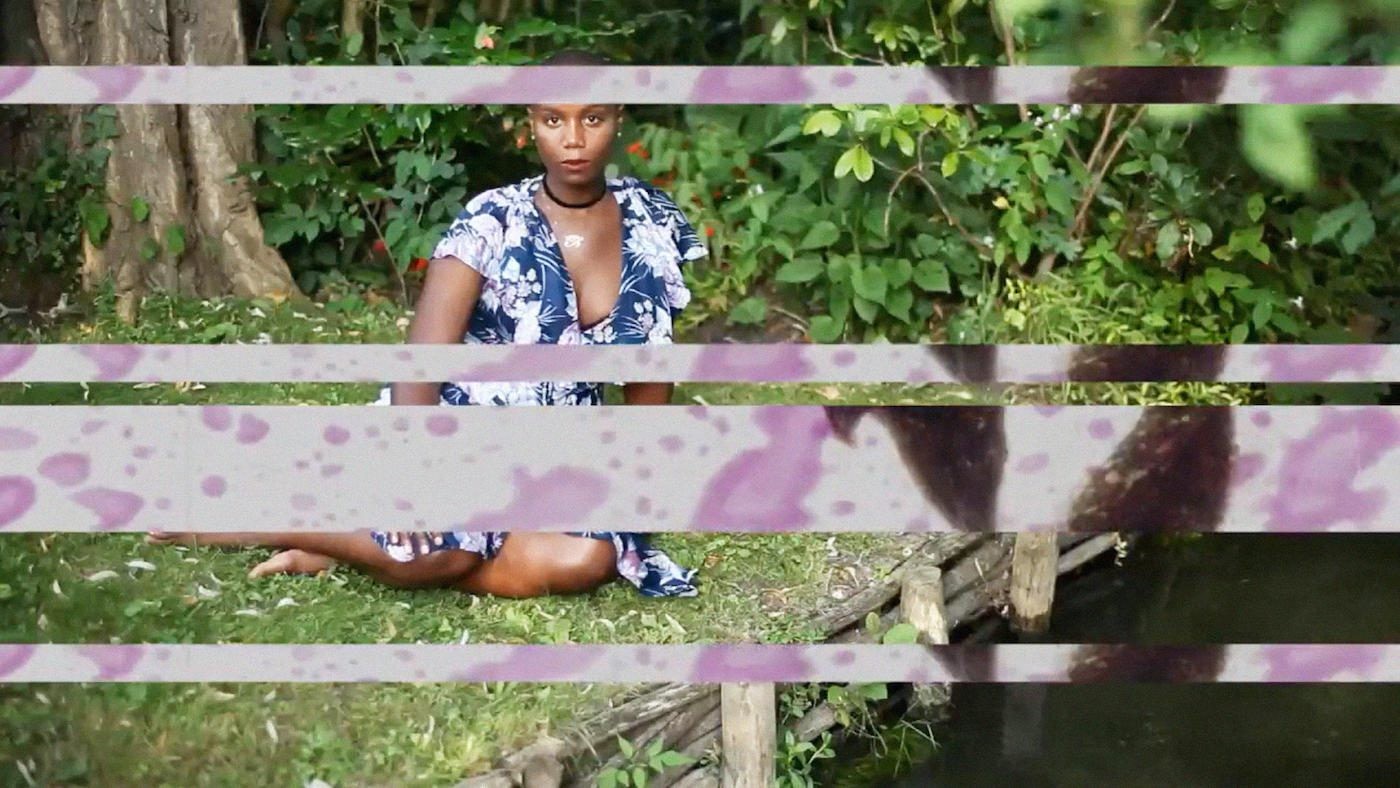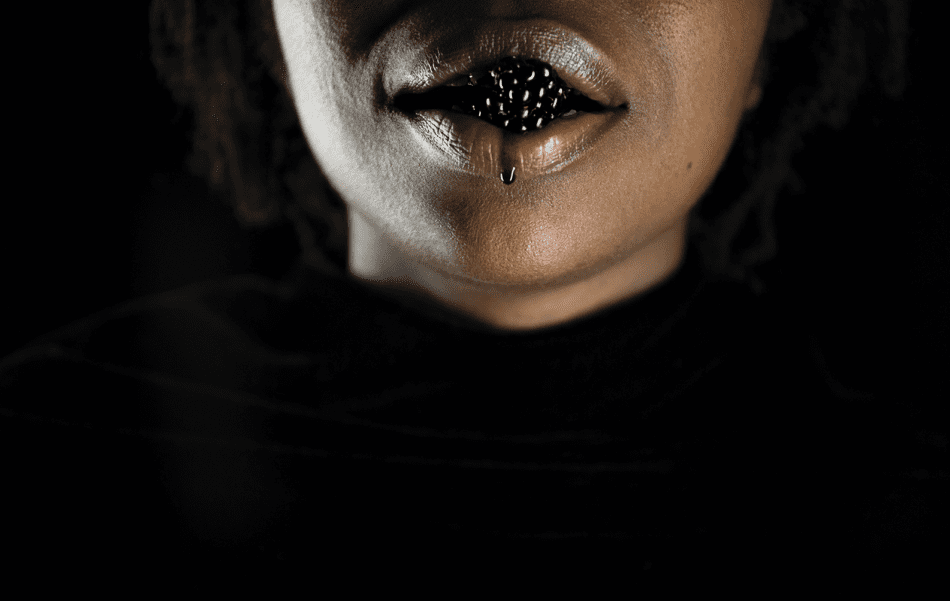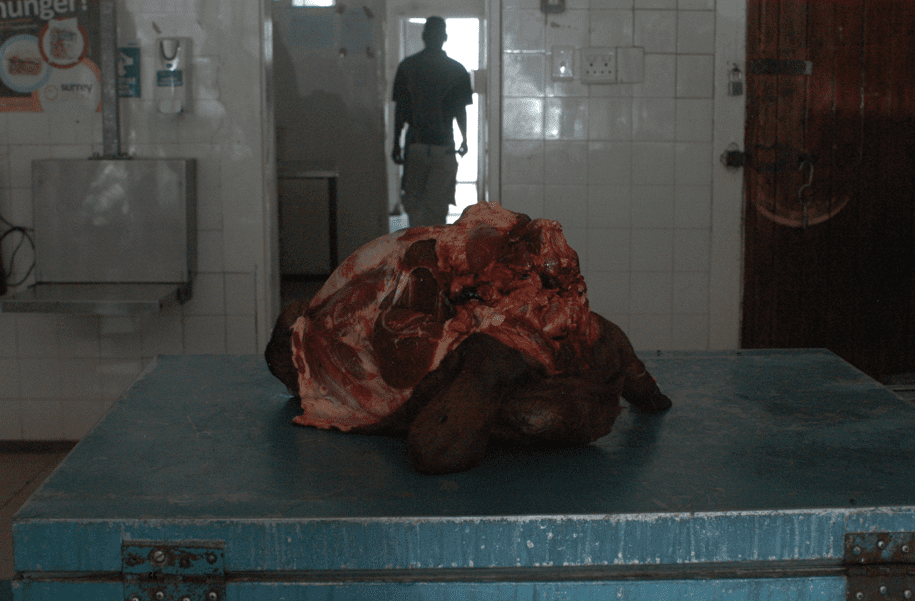Blackness as a State of Matter

18 January 2019
Magazine C& Magazine
Words Will Furtado
8 min read
Zoe Samudzi has co-penned As Black as Resistance with William C. Anderson. In the book, they show the centrality of anti-Blackness to the foundational violence of the United States and make the case for a new program of self-defense and transformative politics for Black Americans. At the end of 2018, Samudzi curated a show in Oakland, California, at Ashara Ekundayo, a gallery dedicated exclusively to Black female artists. In this interview, Will Furtado speaks to Samudzi about institutional space to focus on Black womxn’s cultural production, narrow representations of the African continent, and the exceptionalization of Blackness through major art awards.
Contemporary And: You’ve recently completed a residency at Ashara Ekundayo Gallery which ended with your curated show. What did you use the residency for?
Zoe Samudzi: I used this residency to really think through and observe Ashara’s process of institution-building. Before creating her own gallery, she co-founded the Impact Hub Oakland and was the curator of the Omi Gallery space within it. Her work as a cultural strategist and independent curator has been really inspiring to me because she isn’t pushing this often trite and disingenuous doctrine of “diversity and inclusion” that we often encounter in the art world.

“A Drip of Beauty & Horror” (2018) by Leila Weefur. Courtesy the artist
Instead of trying to figure out how to squeeze underrepresented/deliberately excluded work and voices from certain communities into a dominant canon or institutional space, I’ve come to understand and admire how she dedicates her work and energy to creating spaces for those people. And that’s exactly what she’s done with her gallery: she has created an institutional space to focus on Black womxn’s cultural production, which in turn really forced me to think about my own canon and the kind of artists I’m investing my energy in.
C&: How did you develop the concept of the show you curated at the gallery?
ZS: My show is following Ashara’s satellite show for a stunning recurring group exhibition of Black womxn artists called The Black Woman is God, which first began in 2013 and has been curated by Karen Seneferu and Melorra Green since its inception. In contrast to this portrayal of Black womanhood in an explicitly affirmative space of divinity, I was interested in Blackness—not only Black womanhood—as a state of matter or an element. Not necessarily as an earthly foil to that concept because I think they can be complementary, but to think about different representations of Blackness (beyond controlling images of the Jezebel, the Mammy, the Buck, etc.) and why they’re compelling to us in different ways. I was pulling together the ideas for this show while I was in Namibia (fieldwork) and Zimbabwe (visiting family) this past September, so I was thinking about narrow representations of the continent and all of the other shit that’s happening at the same time. I was thinking about change and evolution, adaptation, activity and rest, interactions with the natural world… so I called the show Elemental.

Kyle Malanda, Who Will Bury You? III, 2018. Courtesy the artist.
C&: Could you talk me through your artist selection?
ZS: I wanted to make sure I had a combination of local artists and artists not from the Oakland Bay. So I thought immediately about Leila Weefur who’s Oakland-based and is always tangling with issues around Black ontologies and violence and desire; I really wanted her in the show. I also really wanted to include Kierra Johnson because I’d seen her solo show Signify at Betti Ono Gallery in 2018 and I thought the intimate softness of her photographs would be a good foil to the dark starkness of Leila’s. kyle malanda is a friend of mine, but I was really drawn to her “Who Will Bury You?” because I was hoping to include content and images explicitly about the continent—her work is a visual interpretation of funerary rituals from her mother’s culture taken on her father’s ancestral land. Leila introduced me to T. Thompson when I was running out of time and was looking for one last artist. Thompson printed her photographs on Belgian linen, which allows the photographs she took (beautiful depictions of young Black folks playing in the ocean in Trinidad) to have some movement. In addition to these three photographers, I wanted to include a filmmaker/video work; I invited Ja’Tovia Gary because I love her work. I loved how Giverny I (Négresse Impériale) relies heavily on sound rather than images in her communication of anti-Black violence and psychic unrest.
C&: How important do you think the Ashara Ekundayo Gallery is in this day and age? Why do you think there aren’t more Black womxn-only galleries in the West?
ZS: Ashara’s work is important because it reminds us that Black womxn are worth studying in ourselves as opposed to simply being relegated to a single special exhibition/retrospective or included as a part of “diverse voices.” I think there aren’t more Black womxn-only galleries in the West because people tend to conflate the desire to invest this kind of time and energy in Black womxn’s work with a kind of “segregation” that’s contra to this line about inclusion. Ashara isn’t trying to finesse Black womxn into a history that’s deliberately ignored us: she’s highlighting the existence of a canon and legacy of Black womxn’s work and inviting everyone to engage this work on her terms, on our terms. This work really isn’t inclusive in the way that “inclusion” has come to be synonymous with ticking off boxes of identities to ensure their presence. There’s a reason our work is referred to as “Black women’s art” but it isn’t convention to say “white men’s work” or “white work”: the hypervisibility of inclusion actually allows the elephant in the room to go unnamed.

Man & Nature I” (2018) by Zoé Samudzi. Courtesy the artist
C&: In November 2018 alone, Kapwani Kiwanga and Sondra Perry won two major art awards. Can we talk about a new interest in Black womxn in the art world at all? And what do you think that really means?
ZS: Both of these artists excite me and I’m glad that they’re getting resources to produce more work! And, being a cynical person, I’m also worried about what it means to exceptionalize Blackness through these awards and to allocate money and legitimacy only to Black artists whose work rises to some unknown subjective standard of excellence decided by the awards’ jurors. This isn’t at all to say that these artists don’t deserve acclaim because resource scarcity is artificial: there’s opportunity for us all to get put on and put one another on. But this is to question why institutions aren’t being more liberal in their distribution of resources to up-and-coming artists and across mediums/artistic disciplines. I want to contrast Kiwanga and Perry’s award wins with the Taylor Wessing prize for photography. John Edwin Mason had a really great Twitter thread about the fact that all of this year’s winners were portraits of non-white people taken by white photographers; and I, like he did in the thread, can easily rattle off Black womxn photographers whose work of similar content is comparable or better. I feel like the art world’s decision to be interested in Black womxn’s work is both so many years overdue and also a little more than suspicious. But I’d be so grateful to be proven wrong, I’d be glad to see that the institutional gaze is shifting. Let’s also get many more Black womxn curators and gallerists, critics and art writers, awards and festival jurors, museum and archival and gallery directors, though—when the means and modes of artistic production and discourse change hands, that’ll be proof that the gaze and the structure is meaningfully changing, and that’s when I’ll shut my mouth a little bit.
C&: What is next for you?
ZS: I’m thinking a lot about violence and intersubjectivity. I’m continuing my “Man & Nature” series, and I showed three images from this in my show, because, as someone who eats meat, I’m interested in visualizations of our foodways and the symbiotic relationship—ultimately one of both dependency and domination—between human and non-human animals. I’m also doing visualizations of genocide memorialization and genocide denial, and I’ll be traveling around a bit starting in 2019 to begin that work. And also I’m a third-year doctoral student, so I really just want to finish this PhD as quickly as possible with my mind and body mostly intact.
Elemental took place at Ashara Ekundayo Gallery, Oakland, USA, in 2018
Zoe Samudzi is a Zimbabwean-American photographer, writer, and doctoral student in Medical Sociology at the University of California.
Interview by Will Furtado.
Read more from

Maktaba Room: Annotations on Art, Design, and Diasporic Knowledge

Irmandade Vilanismo: Bringing Poetry of the Periphery into the Bienal

Esperanza de León: Curating Through Community Knowledge
Read more from

MAM São Paulo announces Diane Lima as Curator of the 39th Panorama of Brazilian Art

Naomi Beckwith Unveils Core Artistic Team for documenta 16
